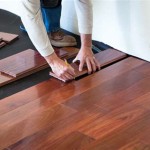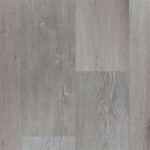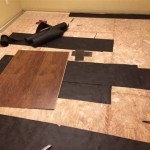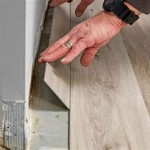Installing Wood Floors Over Tiling: Essential Considerations
Transforming your home's flooring by installing wood over existing tile can significantly enhance its aesthetic appeal and create a warm and inviting ambiance. However, this undertaking requires meticulous planning and execution to ensure a successful and long-lasting installation. Here are some essential aspects to consider:
1. Assess Tile Condition
Before embarking on the installation process, thoroughly inspect the tiling to determine its suitability as a subfloor for wood flooring. Ensure the tiles are firmly adhered to the substrate, with no cracks, loose tiles, or uneven surfaces. If any imperfections are observed, they must be addressed before installing wood flooring to prevent future issues.
2. Subfloor Preparation
To ensure a level and stable surface for the wood flooring, properly preparing the tile subfloor is crucial. This involves sanding down any uneven or bumpy tiles to create a smooth surface. Consider using a self-leveling compound to fill any significant gaps or dips in the tile surface.
3. Moisture Barrier
Moisture is the nemesis of wood flooring, so installing a moisture barrier is paramount to prevent moisture from migrating through the tile and damaging the wood. Polyethylene sheeting with a minimum thickness of 6 mils should be laid over the tile surface, ensuring it overlaps by at least 6 inches and is taped at the seams.
4. Underlayment
An underlayment serves several purposes, including reducing sound transmission, providing a cushion for the wood flooring, and ensuring a level surface. Select an underlayment specifically designed for use underneath wood flooring over tile. Cork, foam, or felt underlayments are common choices that provide good shock absorption and sound insulation.
5. Expansion Gap
Wood flooring naturally expands and contracts with changes in temperature and humidity. To accommodate this movement, an expansion gap of approximately 1/4 inch must be maintained around the perimeter of the room, between the wood flooring and any fixed objects, such as walls or cabinets.
6. Nailed vs. Floating Installation
When installing wood flooring over tile, you have two primary options: nailing or floating. Nailing the wood flooring directly to the subfloor using screws or nails provides a more secure installation but may require additional subfloor preparation. Floating installations allow the wood flooring to be installed over the underlayment without being attached to the subfloor, making them easier to install but potentially less stable.
7. Transition to Other Flooring
Where the wood flooring meets other types of flooring, such as carpet or vinyl, a transition piece is required to create a smooth and seamless transition. There are various types of transition pieces available, including T-moldings, reducers, and thresholds, that can be chosen to match the flooring and complement the home's decor.
Conclusion
Installing wood floors over tile requires careful planning and precise execution. By following these essential considerations, including assessing tile condition, preparing the subfloor, installing a moisture barrier, selecting the appropriate underlayment, maintaining an expansion gap, choosing a suitable installation method, and implementing smooth transitions, you can achieve a beautiful and durable wood floor that will enhance your home's ambiance for years to come.

Step By Installation Guide For Wood Floor Tiles

Discover How To Lay Wood Floors Over Tile Discount Flooring Blog

Can Timber Flooring Be Laid Over Tiles Cb Floors

Can You Install Wood Flooring Over Tiled Floors Havwoods

A Guide To Installing Wooden Flooring Over Existing Tiles Lamiwood

Can You Install Wood Flooring Over Tiled Floors Havwoods

Install Hardwood Flooring Over Tile Floor Double Glue Down Method

Can You Tile Onto Wood Floors Stonesuper

Installing Wood Look Tile Tips From A Pro Brepurposed

How To Install Wood Flooring Over Tile Floor Decor Giveaway
See Also







